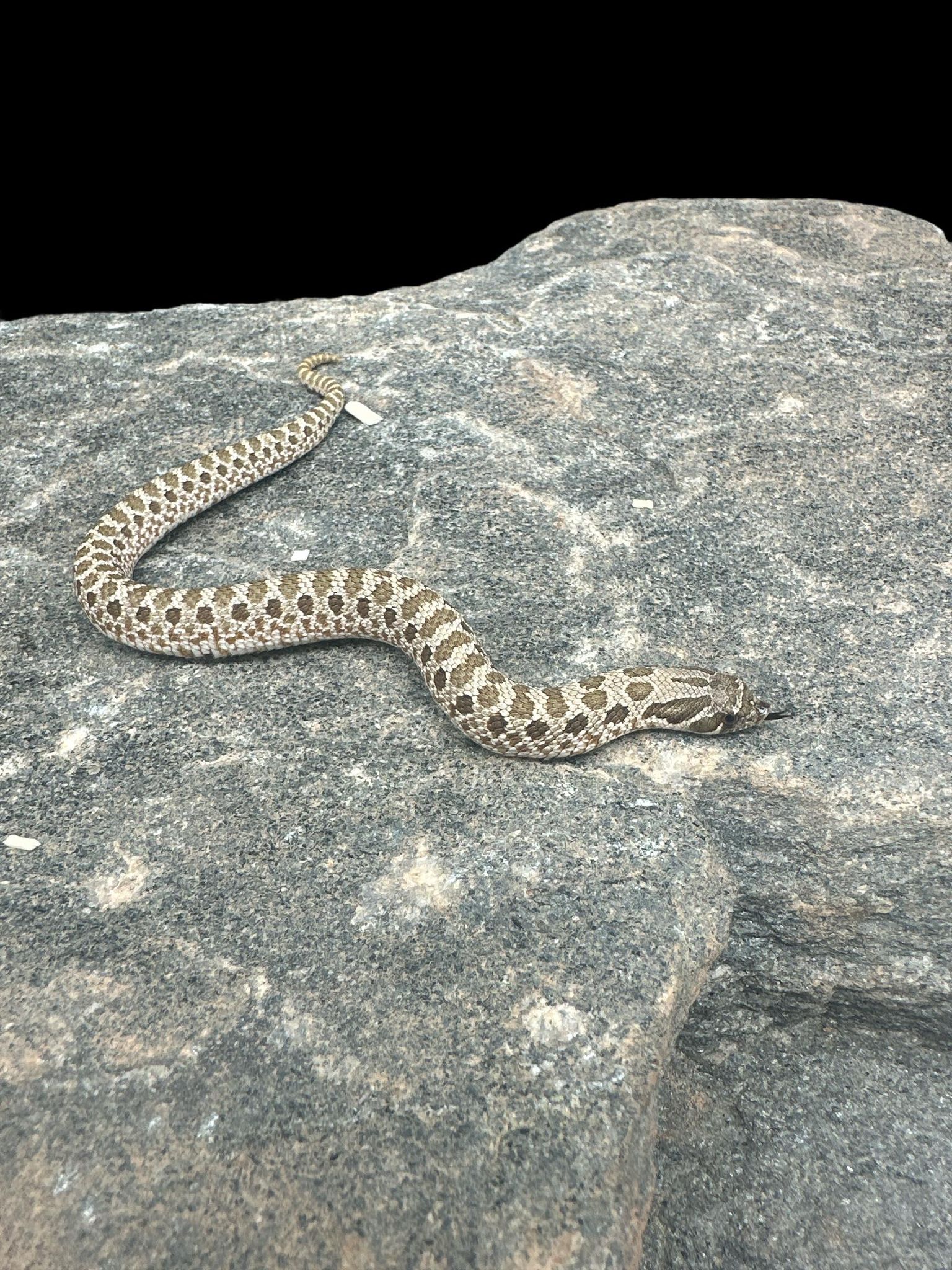Photo Disclaimer
Description
Western Hognose (het. Coral)
Scientific Name: Heterodon nasicus
Common Name: Western Hognose Snake
Species Overview
Size: Adult females typically reach 2–3 feet (0.6–0.9 m) in length, while males average 1.5–2 feet (0.45–0.6 m). Both sexes feature the species’ characteristic upturned snout, adapted for digging and burrowing in loose soils.
Appearance: The het. Coral Western Hognose appears similar to a typical wild-type in overall pattern, but carries one copy of the Coral gene—an Albino-based line selectively bred for intensified pink and orange pigmentation. While this gene is not visually expressed in its heterozygous form, subtle warmth may sometimes be seen along the lateral scales or blotches. When bred to another Coral or compatible Albino-type morph, this snake has the potential to produce visually stunning offspring with deep coral, salmon, and peach hues.
Distribution: Native to central North America, from southern Canada through the Great Plains and into northern Mexico.
Habitat: Western Hognose Snakes inhabit open prairies, grasslands, and semi-arid regions with sandy or loose soil ideal for burrowing. In captivity, this morph thrives in terrestrial terrariums with soft substrate, climbing décor, and secure hiding areas.
Behaviour: Western Hognoses are diurnal, curious, and alert snakes known for their dramatic bluff displays, which may include hissing, neck flattening, or mock strikes. These displays are harmless, and with regular handling, they settle into confident, inquisitive animals.
Captive Care
Enclosure: Provide an enclosure at least 3 feet × 18 inches × 18 inches for adults, using deep, soft substrate such as aspen, soil, or a sand-soil blend. Include multiple hides, smooth décor, and low branches for enrichment.
Temperature & Humidity: Maintain a daytime gradient of 78–86°F (25–30°C) with a basking area near 90°F (32°C). Allow nighttime drops to 70–74°F (21–23°C). Keep humidity between 30–50%, slightly increasing during shedding.
Diet: Offer thawed rodents approximately 1.25× the width of the snake’s mid-body. Feed juveniles every 4–5 days and adults every 7–10 days. Western Hognoses are reliable feeders that adapt easily to routine schedules.
Behaviour in Captivity: Hardy, engaging, and active, Western Hognoses thrive with consistent care and stable conditions. They are often seen burrowing or exploring during daylight hours and tolerate handling well once accustomed.
Special Considerations: Western Hognoses are mildly rear-fanged, and their venom poses minimal risk to humans unless an allergic reaction occurs. Handle calmly and house them individually to avoid feeding-related aggression or stress.
Genetics Note
het. Coral (Recessive Carrier): Carries one copy of the Coral gene, a line-bred variant of Albino selectively enhanced for stronger pink and orange tones. When visual, Coral Western Hognoses display bright salmon and coral hues with soft white contrasts. (“het” is short for heterozygous, meaning one copy of the gene is carried but not expressed.)
Genetic Combination Summary
The Western Hognose (het. Coral) carries one recessive gene:
-
het. Coral (Recessive Carrier): Provides potential for vibrant pink and orange offspring when paired with another Coral or compatible Albino-type carrier.
While not visually distinct, this morph holds strong breeding potential and is a foundational step toward producing the highly sought-after Coral Western Hognose—renowned for its vivid, sunset-like coloration and clean, pastel contrast.

